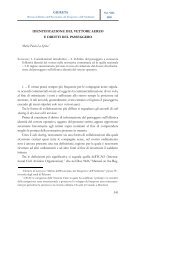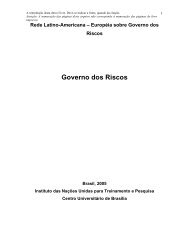Rome II and Tort Conflicts: A Missed Opportunity Abstract Contents
Rome II and Tort Conflicts: A Missed Opportunity Abstract Contents
Rome II and Tort Conflicts: A Missed Opportunity Abstract Contents
You also want an ePaper? Increase the reach of your titles
YUMPU automatically turns print PDFs into web optimized ePapers that Google loves.
SYMEON C. SYMEONIDES ROME <strong>II</strong> AND TORT CONFLICTS<br />
Nevertheless, a closer look at some of the other articles reveals that <strong>Rome</strong> <strong>II</strong><br />
does not—because it cannot—entirely avoid an issue-by-issue analysis <strong>and</strong> thus the<br />
possibility of dépeçage. First, some of <strong>Rome</strong> <strong>II</strong>’s articles speak of the law applicable<br />
to the “obligation” arising out of a tort or delict, rather than to the tort or delict as a<br />
whole. This is a wise choice of terms, which will enable courts to engage in a more<br />
individualized evaluation of the multiple obligations that may arise from the same<br />
events. Moreover, if <strong>Rome</strong> <strong>II</strong> uses the term obligation in its original sense of the legal<br />
bond between the obligor <strong>and</strong> the obligee that encompasses both the obligor’s duties<br />
<strong>and</strong> the obligee’s rights, the court will be able to further differentiate among the rights<br />
of the individual victims <strong>and</strong> proceed accordingly.<br />
<strong>Rome</strong> <strong>II</strong> consciously stops short of the next logical step of encouraging or even<br />
permitting an issue-by-issue analysis of the various aspects of the obligation. Even so,<br />
some of <strong>Rome</strong> <strong>II</strong>’s other articles contain the possibility for further splitting the issues.<br />
Among the latter articles are:<br />
61<br />
(a) Article 8(2) on intellectual property rights;<br />
62<br />
(b) Article 14 on choice-of-law agreements;<br />
(c) Articles 16 on m<strong>and</strong>atory rules <strong>and</strong> 26 on ordre public; 63<br />
(d) Article 17 on rules of “safety <strong>and</strong> conduct”; 64<br />
65<br />
(e) Article 18 on direct actions against insurers;<br />
(f) Articles 19 <strong>and</strong> 20 regarding subrogation, indemnification, or<br />
60. (...continued)<br />
assessment of damage or the remedy claimed; injunctive relief, the proper beneficiaries of the<br />
right to claim damages, <strong>and</strong> its transferability or heritability, respondeat superior, <strong>and</strong> the<br />
extinction or prescription of the obligation (statutes of limitation).<br />
61. This provision can lead to the application of community law to some issues <strong>and</strong> national law to<br />
other issues. Art, 27 can also lead to the same phenomenon by recognizing that a case may be<br />
governed partly by the law designated by <strong>Rome</strong> <strong>II</strong> <strong>and</strong> partly by the law designated by other<br />
choice-of-law rules contained in other community instruments.<br />
62. Art. 14 can lead to dépeçage through several different routes. For example, the parties may<br />
choose different laws for different aspects of the case, or they may choose one law for some<br />
issues <strong>and</strong> none for others. Even when they choose one law for all issues, that law will not be<br />
applied to the extent it violates the m<strong>and</strong>atory rules described in art. 14(2) or the community<br />
rules described in art. 14(3).<br />
63. Arts. 16 <strong>and</strong> 26 allow courts to displace the applicable law to the extent necessary to satisfy the<br />
m<strong>and</strong>atory rules of the forum state, or to the extent that law is incompatible with the forum’s<br />
ordre public.<br />
64. Art. 17 (discussed infra V<strong>II</strong>I) allows the court to “take account” of the conduct rules of the<br />
conduct state when the rest of the case is governed by the law of another state.<br />
65. Under art. 18, the victim’s right to directly sue the tortfeasor’s insurer may be governed by the<br />
law governing the insurance contract, although the tort may be governed by another law.<br />
56 AMERICAN JOURNAL OF COMPARATIVE LAW (2008) PAGE 14 OF 46



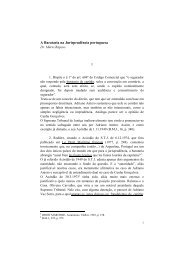

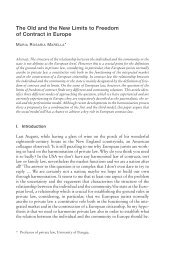

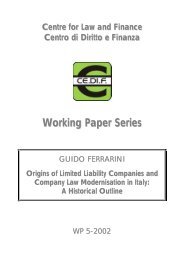
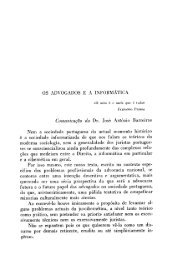
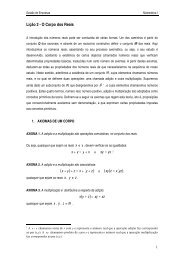
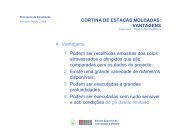
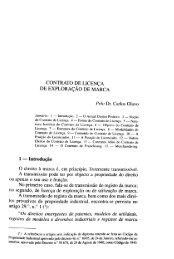
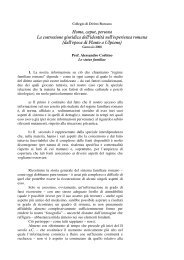
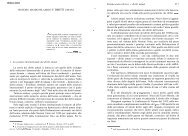

![Luigi Sapio Nozione di islām La parola “islām” [ ] è il mas.dar1 ...](https://img.yumpu.com/15836073/1/185x260/luigi-sapio-nozione-di-islam-la-parola-islam-e-il-masdar1-.jpg?quality=85)
